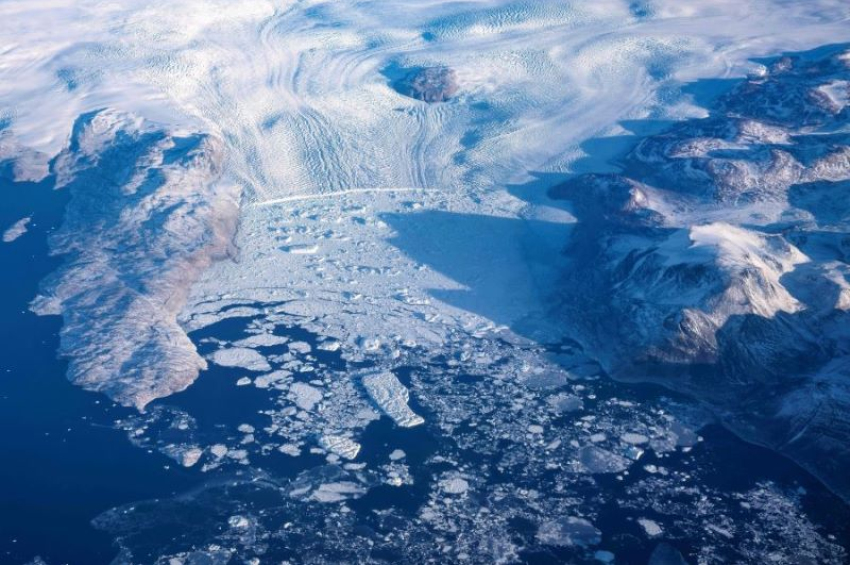Why did Greenland melt down 416,000 years ago?
A global warming event similar to what we are experiencing today caused 20% to 70% of Greenland’s ice cap to melt down. Unlike the previous time, the current global warming puts the melting of the ice cap on the irreversible path for centuries to come, according to a study published in the journal Science.
This event, during a period with temperatures approximately 1.5°C higher than the pre-industrial era, led to a rise in sea levels of at least 1.4 meters, possibly reaching 5.5 meters.
Parts of the giant island turned into tundra and forests where wooly mammoths thrived.
The study, which is the result of collaboration of several U.S. universities, draws from an intriguing historical context. In 1966, amidst the Cold War, the U.S. Army covertly drilled into the ice of northwest Greenland at Camp Century, ostensibly for research but with intentions to conceal 600 nuclear missiles. Despite extracting only 3 meters of core from subglacial sediments during drilling to a depth of 1,400 meters, the samples were forgotten in a warehouse for decades.
More to read:
Study: Greenland loses 300 billion cubic meters of ice per year - 20% more than expected
Rediscovered in 2017, these samples, comprising rocks mingled with organic matter like leaves and insects, revealed Greenland's past ice cap melting events. A subsequent study in 2021 confirmed that Greenland's ice cap had melted at least once in the past million years.
The latest research utilizes advanced techniques such as luminescence dating to precisely determine the age of this deglaciation event, further elucidating Greenland's climatic history and its implications for the future stability of its ice sheet.
The findings underscore the sensitivity of Greenland to climate disruption, mirroring concerns about current global warming, the authors stated. The Greenland ice sheet lost 5,091 square kilometers (1,930 square miles) of area between 1985 and 2022, last year studies show based on photographs made by NASA's Jet Propulsion Laboratory from space.
At least 1,034 gigatons of ice have been lost as glaciers retreated and chunks of ice fell into the ocean and melted.
While human populations were rare 400,000 years ago, today more than 2.15 billion people live in coastal zones – that is more than 25% of the 8 billion people estimated to live on Earth in late 2023 – and the rise of sea levels even by 1 meter will have disastrous consequences on their lives.
If fully melted, the Greenland ice sheet would raise the global sea level by about 7.4 meters (23 feet).
The cause of global warming more than 400,000 years ago lies in temperature change due to variations in carbon dioxide concentration in the atmosphere.
***
NewsCafe relies in its reporting on research papers that need to be cracked down to average understanding. Some even need to be paid for. Help us pay for science reports to get more interesting stories. Use PayPal: office[at]rudeana.com or paypal.me/newscafeeu.







